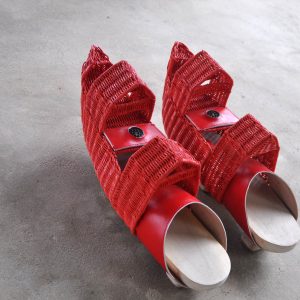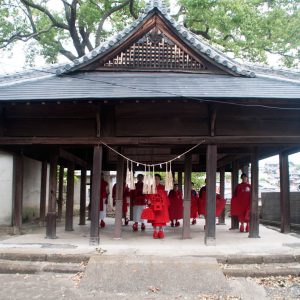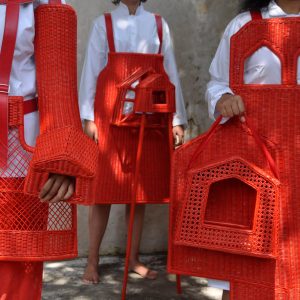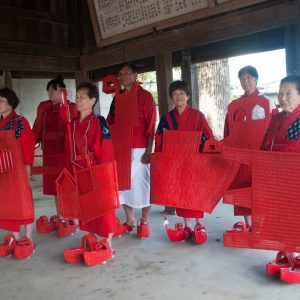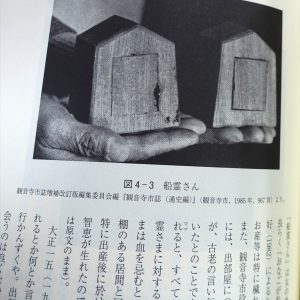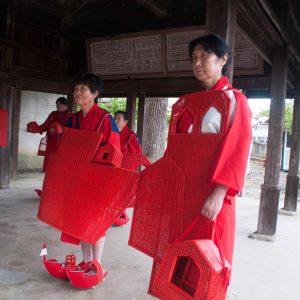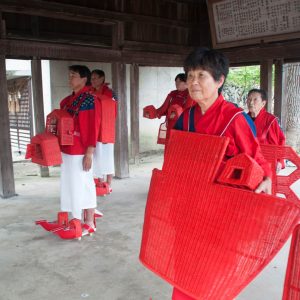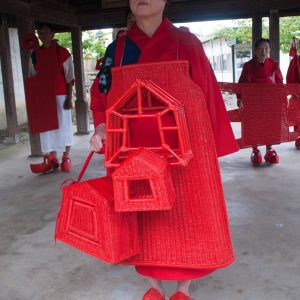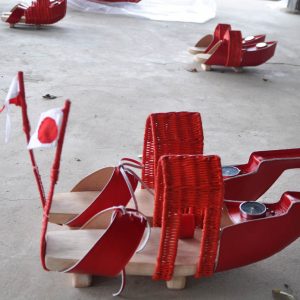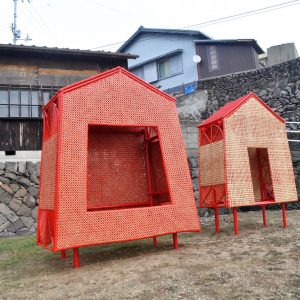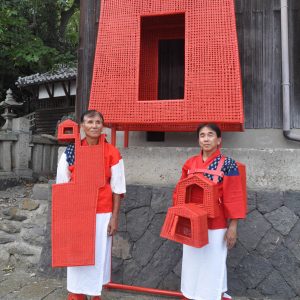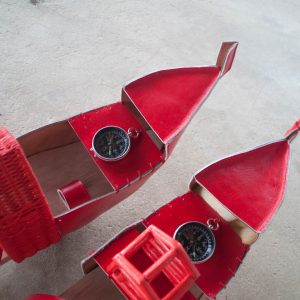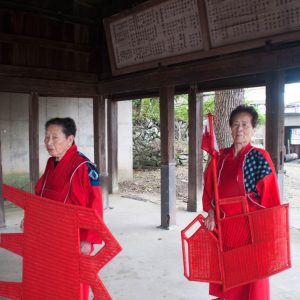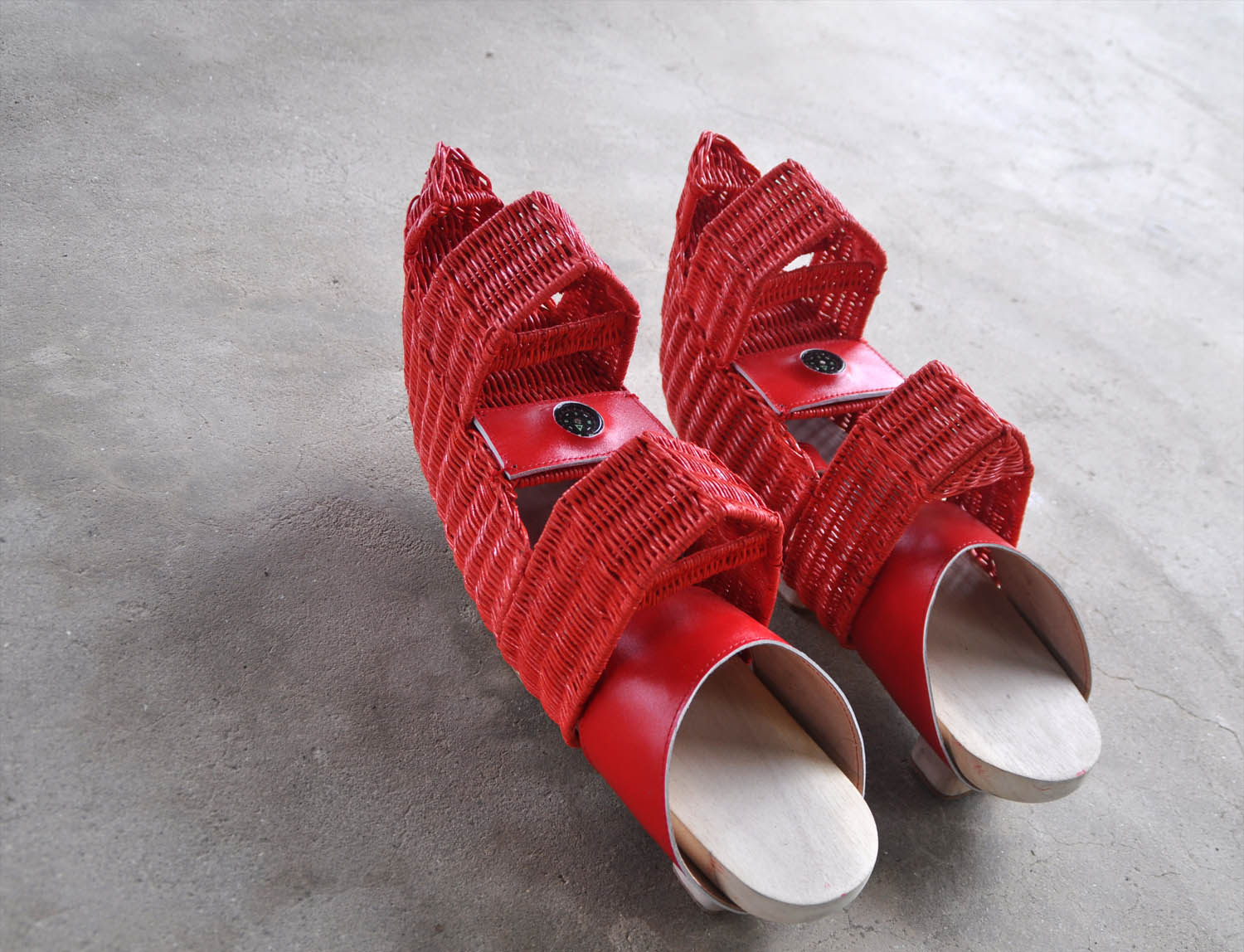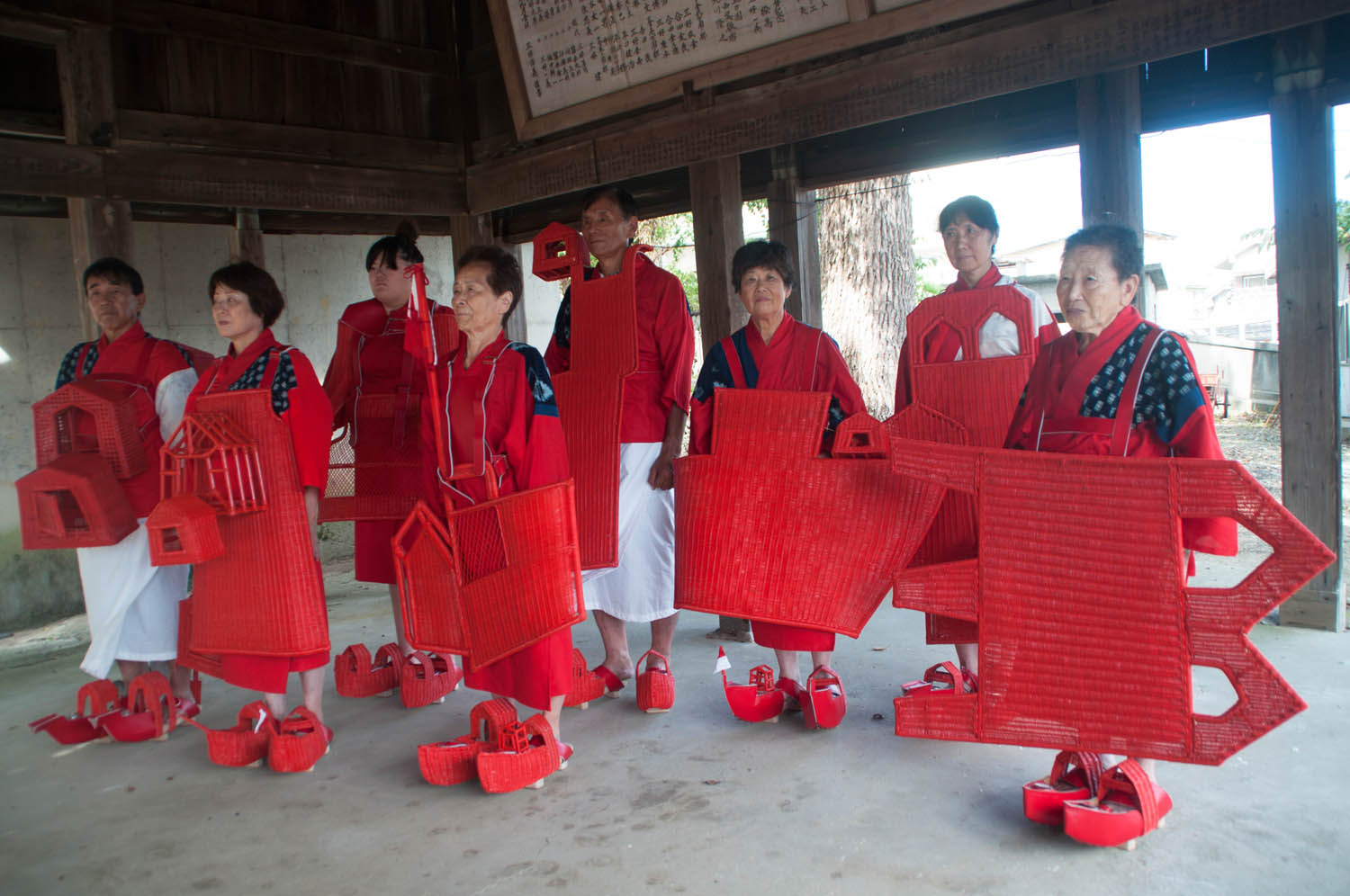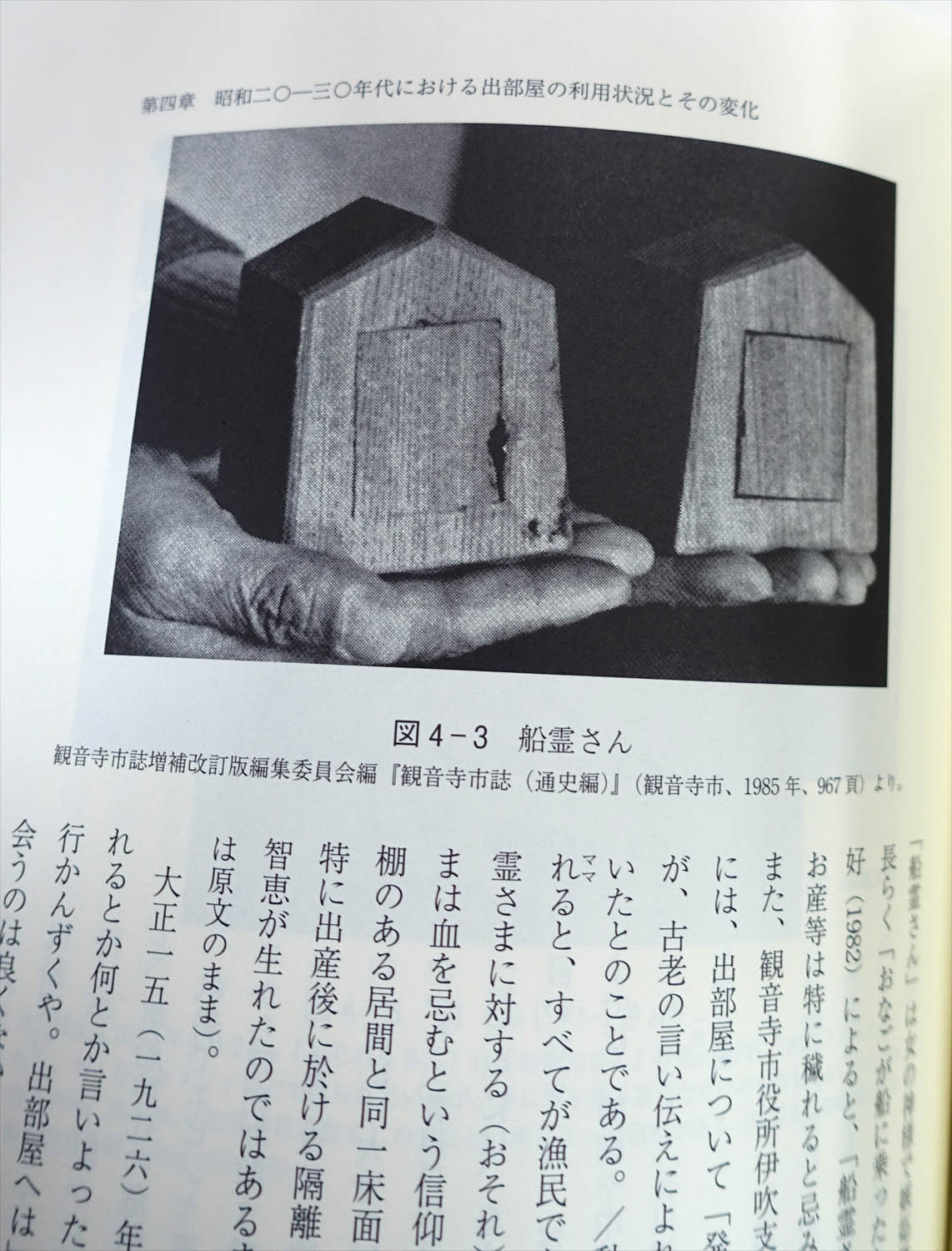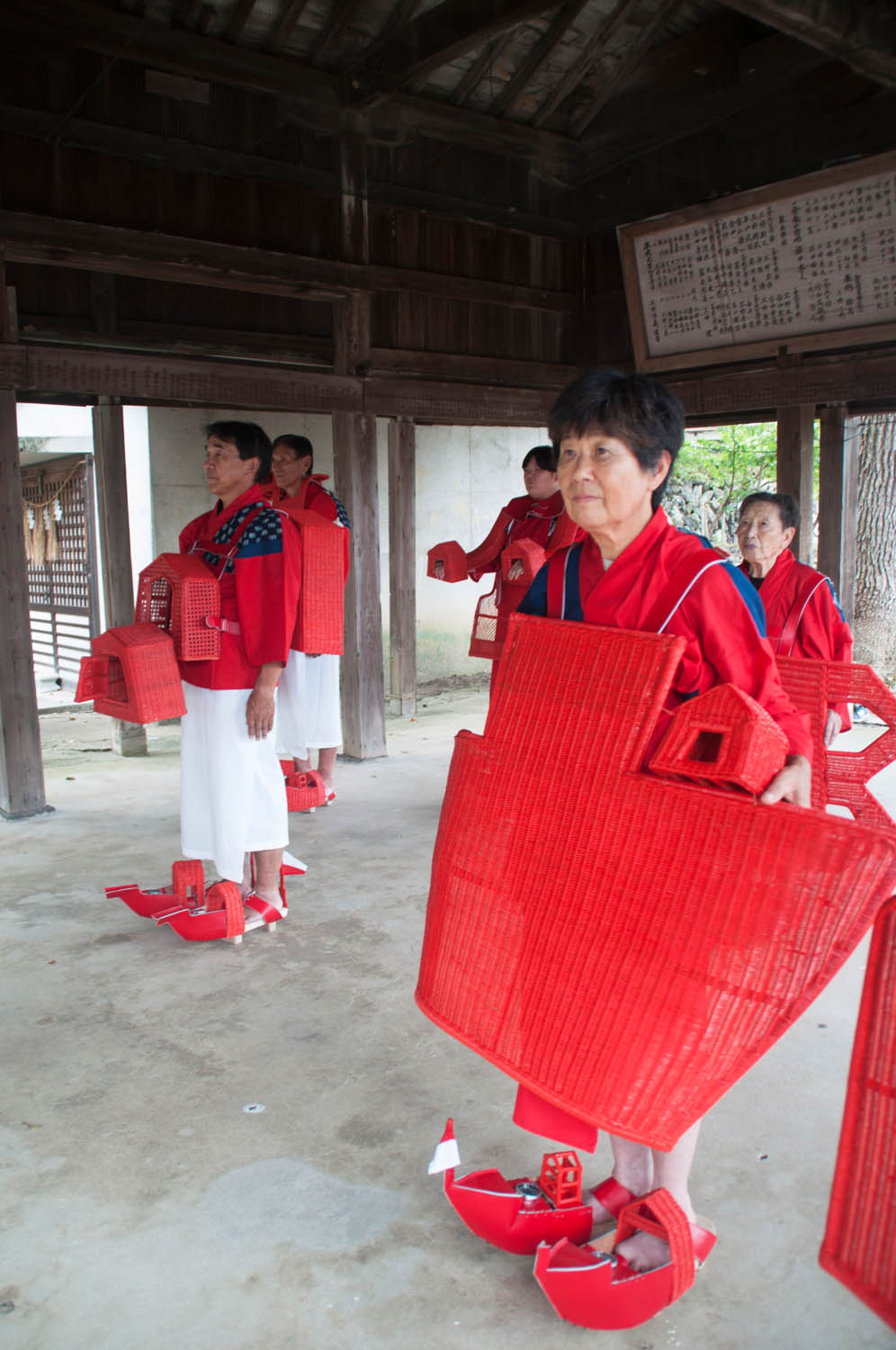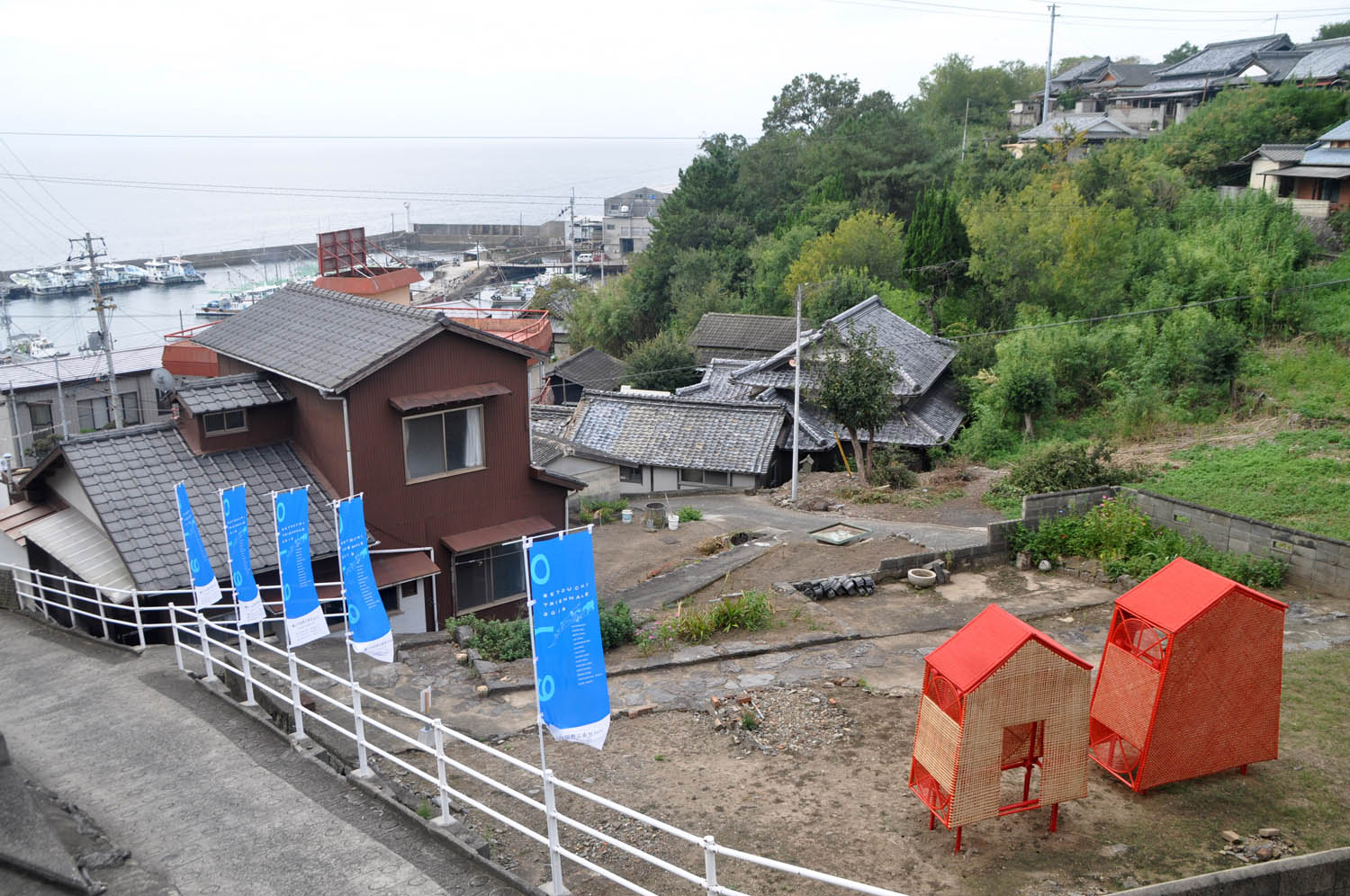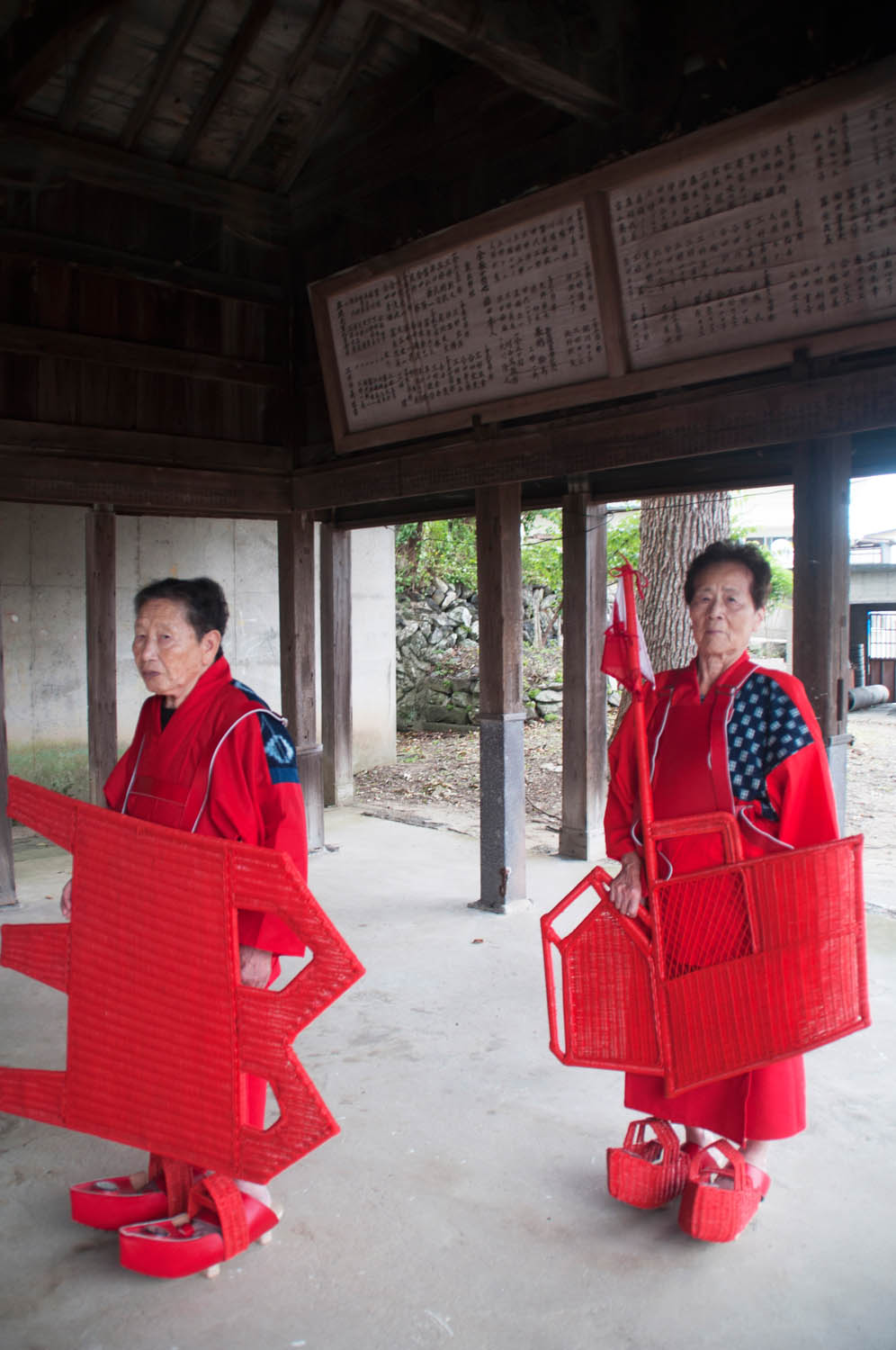Performance and installation, with rattan, fabric, leather, wood, sound
Site-specific work made for the Setouchi Triennale on Ibuki Island, Japan. In collaboration with artist Nindityo Adipurnomo and the villagers of Ibuki, kimono tailors, singers and performers.
The Indonesian word pasang has two meanings; it can be translated to ‘tide’or ‘pair’. The installation that we created for the Setouchi Triennale was inspired by the life of the community of Ibukijima, a tiny Japanese island in the Setouchi Sea. In the old days, two boats were used to drag one fishing net through the water, one on either side of the net. One boat needed the other, like the right hand needs the left. During our research, we came across a ‘Funadama-san’, a small shrine for the Shinto goddess Funadama. The shrine is shaped like a house, so small it fits in the palm of a hand. In the past, boat builders used to craft these talismans from leftover wood. Until today, Ibuki fishermen carry a ‘Funadama-san’ across the water to protect them from harm and bring them a prosperous catch.
For our participation in the Setouchi Triennale, we created an installation consisting of a series of large-scale rattan ‘Funadama-san’ houses, as well as rattan costumes and shoes shaped like boats. When the Funadama stands upright, it takes the shape of a house, signifying stability. The same shape, when placed in a horizontal position, becomes a boat, representing mobility. These two seemingly opposite shapes, the vertical and the horizontal, the stabile and the mobile, were also used in shoes and costumes.
Together with the elderly villagers, we created a performance in an old shrine on the island. While wearing these costumes and shoes, we walked towards the four cardinal points. Living on an island, the importance and awareness of direction is inherently part of one’s daily experience. This is why Iadded compasses to the boat-shoes: so you can always be sure of your direction, wherever you go. We furthermore recovered an old fisherman’s song that had nearly been forgotten. For two weeks, we rehearsed this song together with the islanders. In our installation, the recordings of our collective singing can be heard flowing from one of the large-scale rattan ‘Funadama-san’ sculptures.
